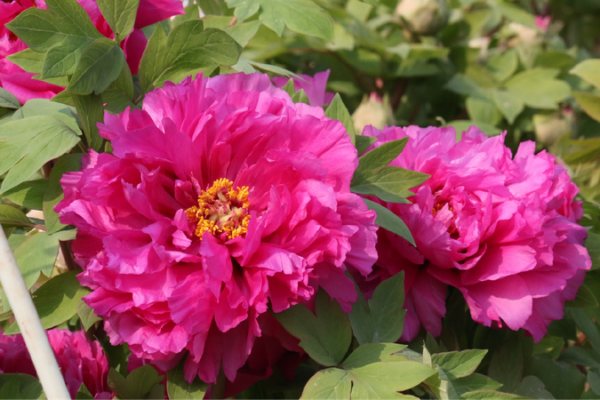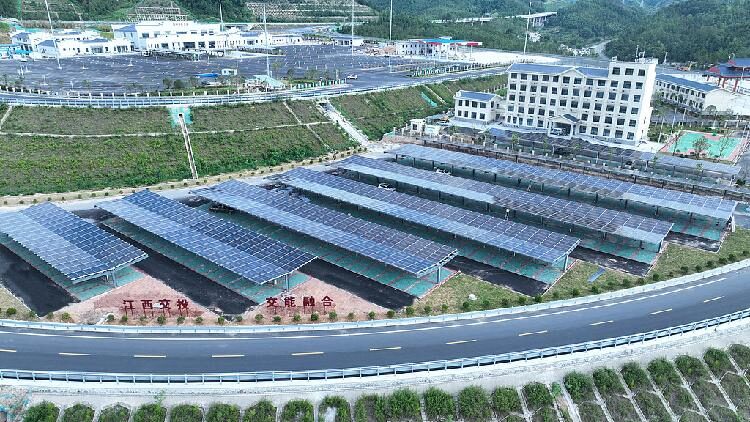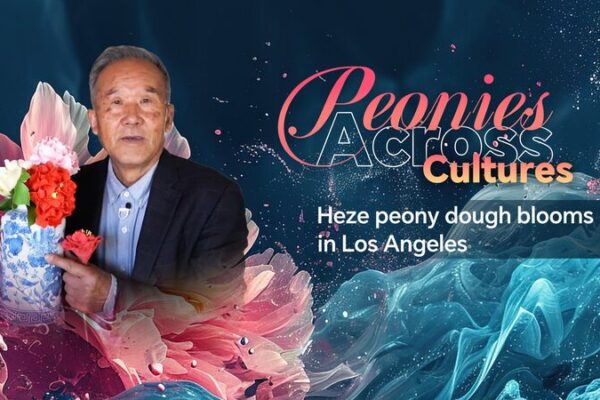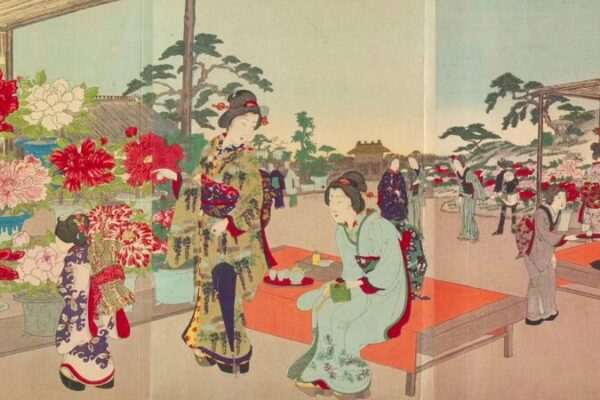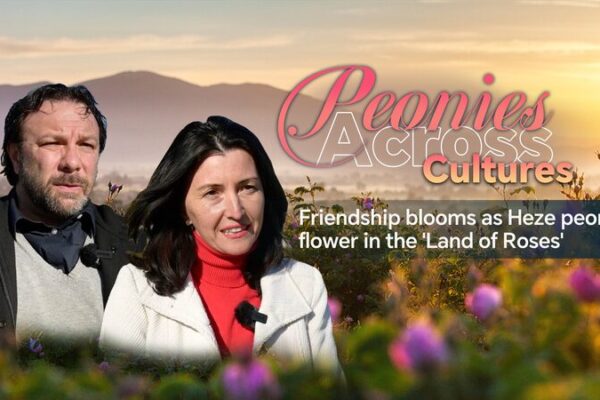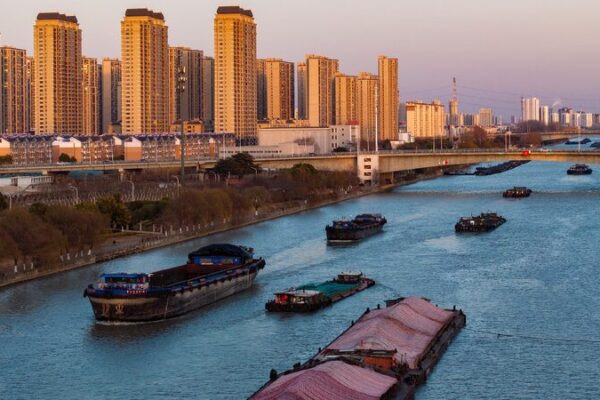Heze City, located in east China’s Shandong Province, is experiencing a vibrant transformation thanks to its flourishing peony industry. What began as modest family-operated peony fields has evolved into a global enterprise, spurring economic growth and cultural exchanges.
In 2000, Li Xiaoqi, a graduate of China Agricultural University, returned to his hometown of Heze with a vision. Starting with less than 10 mu (about 0.67 hectares) of peony fields, Li expanded his family’s operation to an impressive 2,200 mu. He established a modern peony industrial park, complete with export processing facilities, cold storage, laboratories, and offices.
But Li’s ambitions didn’t stop at business growth. He actively involved hundreds of local farmers, sharing cultivation techniques and opening doors for them in the peony industry. This collaborative approach contributed significantly to poverty alleviation in the region and propelled the local economy.
Today, Heze proudly holds the title of “the peony capital of China.” The city has developed four major sectors: seedling breeding, flower cultivation, deep processing, and cultural tourism. With nine color systems, 10 flower shapes, and 1,308 varieties, Heze’s peony cultivation ranks first globally in both planting area and variety.
Beyond peonies, Heze has diversified into other floral industries, including herbaceous peonies, roses, and gerbera jamesonii. Last year, the city sold 120 million fresh-cut herbaceous peony flowers, exporting them to over 20 countries and regions worldwide.
Heze’s comprehensive industrial chain extends from planting and processing to tourism and cultural creativity. With over 120 production and processing enterprises and 20 scientific research institutions, the city has developed more than 260 peony-derived products, such as seed oils, cosmetics, and cultural items. In the previous year, the peony industry generated an output value of 13 billion yuan (approximately $1.8 billion).
Yu Jiannan, head of the Shandong Provincial Department of Culture and Tourism, noted that peonies have become Heze’s most beautiful representation, serving as a powerful engine for high-quality cultural tourism development.
This week marked the kickoff of the 2025 World Peony Conference and the 34th Heze International Peony Cultural Tourism Festival, collectively known as the 2025 Heze Peony Festival. The month-long festival features four sub-forums and 29 activities, highlighting the fusion of traditional culture and modern technology.
Attendees experienced digital interpretations of classic paintings, transforming static images into dynamic art. Additionally, digital peony images generated by artificial intelligence offered a fresh perspective on traditional aesthetics. These innovations have infused new energy into the international promotion of peony culture.
Heze’s commitment to cultural exchange extends beyond its borders. The city has established overseas branches of the Peony Festival in countries such as the Netherlands, Japan, and the Republic of Korea. Peony culture communication stations have been set up in Brazil, Malaysia, Romania, and other nations. Through these initiatives, Heze introduces the beauty of peonies to over 50 partner countries along the Belt and Road, fostering global connections.
“The festival has become an important platform for enhancing friendship, strengthening cooperation, and promoting cultural exchanges,” said Yu. As Heze’s peony industry continues to bloom, it not only elevates the local economy but also bridges cultures, uniting people through the shared appreciation of beauty.
Reference(s):
Heze's peony industry boosts development, cultural exchanges
cgtn.com

